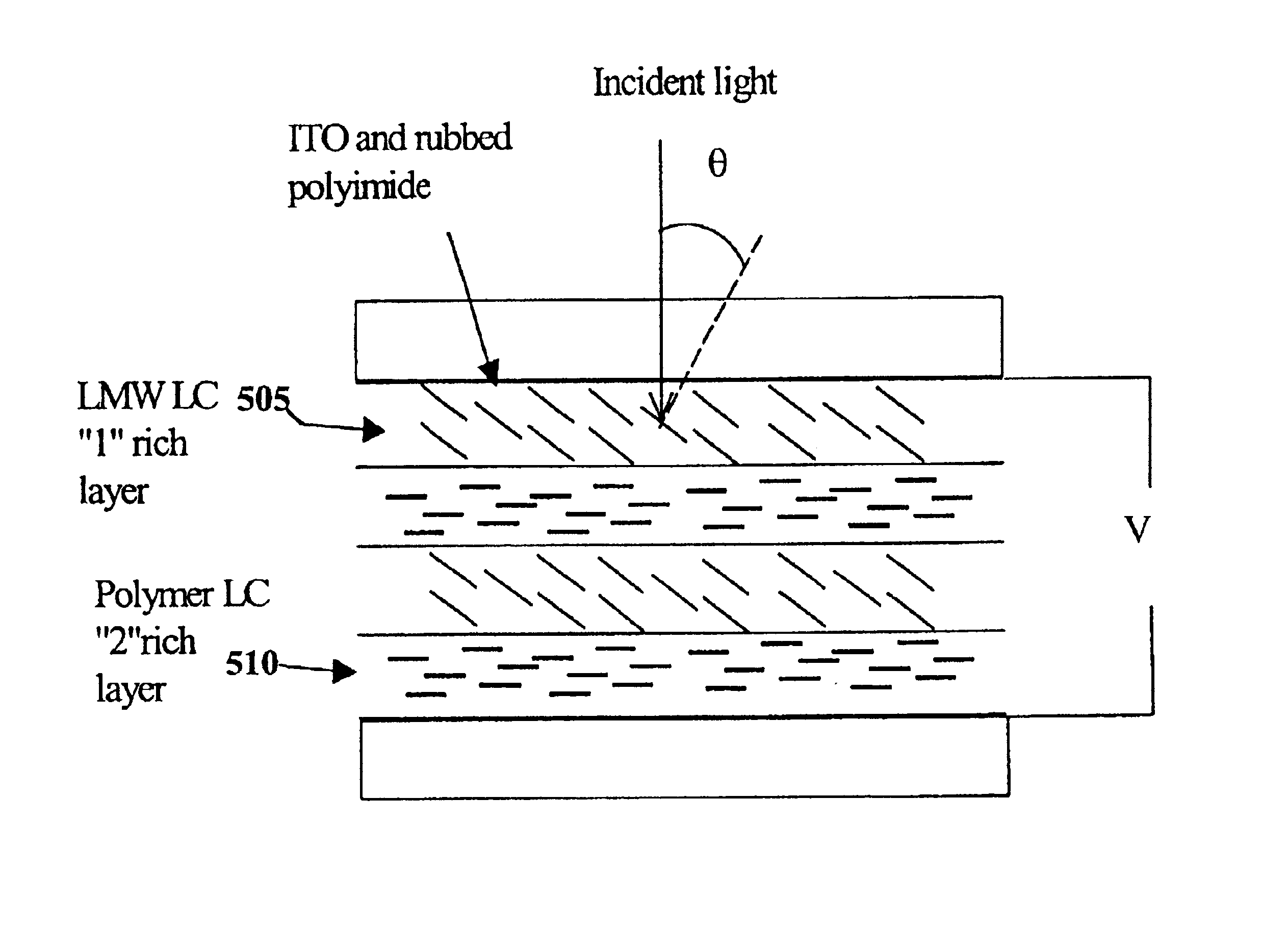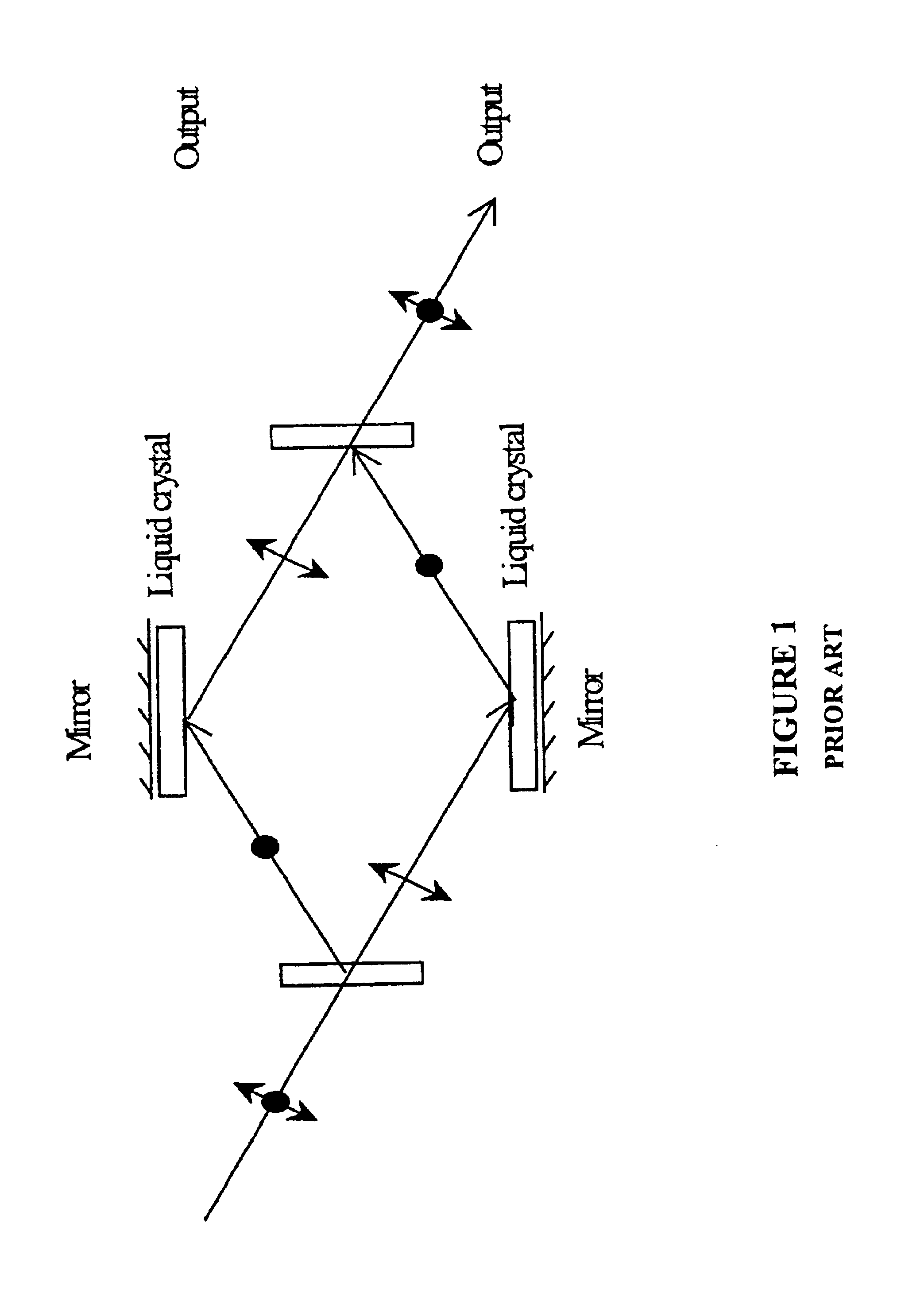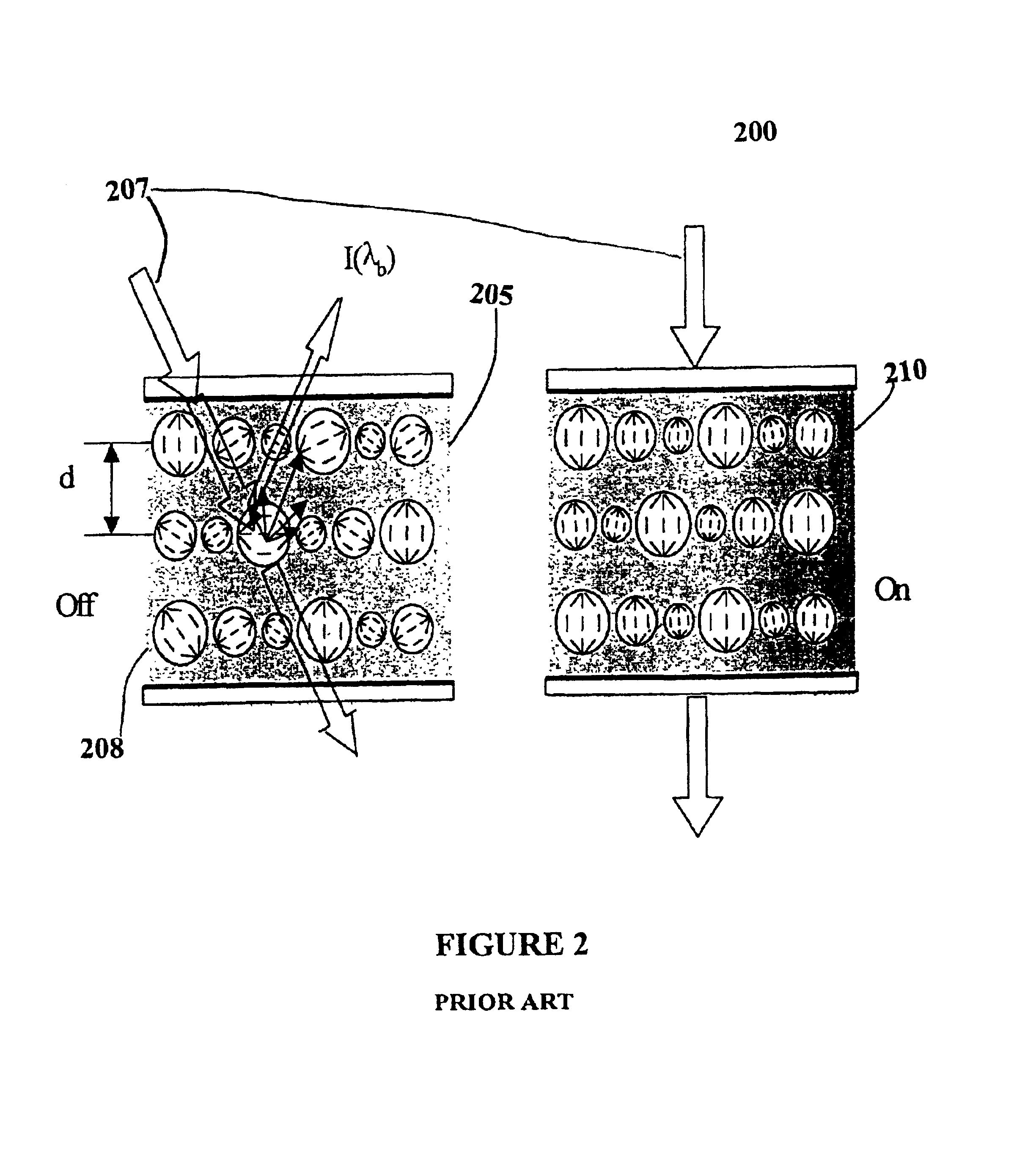Optical router switch array and method for manufacture
a switch array and optical router technology, applied in the field of optical switch arrays, can solve the problems of large device electric power consumption, high maintenance cost, bulky switch array, etc., and achieve the effects of stable versus, simple configuration, and stable operation within the operational spectral region
- Summary
- Abstract
- Description
- Claims
- Application Information
AI Technical Summary
Benefits of technology
Problems solved by technology
Method used
Image
Examples
first embodiment
(First Embodiment) Switchable Mirror
[0057]FIG. 5 illustrates the first embodiment of the present invention of creating a holographically formed switchable mirror from liquid crystal in a nematic phase whose reflection peak is tunable via varying the strength of the applied electric field across the device.
[0058]At zero voltage, both LMW liquid crystal (LC) 505 and liquid crystal polymer 510 are aligned in homogeneous texture. The LMW also containes Indiom-Tin-Oxide ITO and rubbed polymide. Assume that nlce≠npe and nlco=npo. The p-polarization incident light “sees” a Bragg grating with a period 2(nlce+npe).d and is reflected. The S-polarization is passed. However, when voltage is applied, the LMW is re-oriented to have a tilt angle φ. As a result, the P-polarization incident light “sees” an effective refractive liquid crystal index ne|eff which is in between nlce and nlco, i.e., nlce>ne|eff>nlco. Then the device still reflects p-polarization but at a shifted wavelength 2(ne|eff+np)....
second embodiment
(Second Embodiment)
[0059]FIG. 6 illustrates the second embodiment of the invention in which the switchable mirror is made from liquid crystals in cholesteric phase under holographic condition. Similar to the first embodiment, the reflection wavelength of this device is electrically tunable. However, different from the first embodiment, this tunable reflection peak is polarization insensitive. The device has a Bragg grating structure consisting of two sets of alternatively spaced CLC planes 600, 605. The two CLC's have the same selective reflection wavelength at λ1=λ2, the same an average refractive index na1=na2, and the same birefringence Δn1=Δn2. It is further assumed that one CLC is polymerized into a solid state while the other one is LMW CLC that can be electrically switched. The LMC CLC contains ITO and rubbed polymide. ITO is the electric conductive coating that is optically transparent. The rubbed polyimide is used for liquid crystal alignment. The longer axis of the liquid ...
third embodiment
(Third Embodiment) Optical Switch Array
[0069]FIG. 11 shows a schematic of the desired switch array configuration according to the present invention, where an 8×8 switch is illustrated as an example. It should be noted that although there may be an alternative arrangement for the mirror elements, however, the spirit using the single layer switchable mirror to build the switch array remains the same.
[0070]The switch array 1100 is made from switchable mirror elements which are further made from holographic cholesteric liquid crystal. The mirror elements are sandwiched between solid substrates 1120 (e.g., glass and / or plates) and are electrically isolated from each other by using pixilated conductive electrodes, such as Indium-Tin-Oxide (ITO). Each mirror element is independently addressed in a similar way used in liquid crystal display. In order to avoid the beam alignment problem such as that encountered with MEMs technology, the following fabrication method is invented.
[0071]FIG. 12 ...
PUM
| Property | Measurement | Unit |
|---|---|---|
| reflectivity | aaaaa | aaaaa |
| gap thickness | aaaaa | aaaaa |
| incident angles | aaaaa | aaaaa |
Abstract
Description
Claims
Application Information
 Login to View More
Login to View More - R&D
- Intellectual Property
- Life Sciences
- Materials
- Tech Scout
- Unparalleled Data Quality
- Higher Quality Content
- 60% Fewer Hallucinations
Browse by: Latest US Patents, China's latest patents, Technical Efficacy Thesaurus, Application Domain, Technology Topic, Popular Technical Reports.
© 2025 PatSnap. All rights reserved.Legal|Privacy policy|Modern Slavery Act Transparency Statement|Sitemap|About US| Contact US: help@patsnap.com



